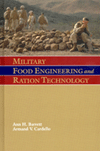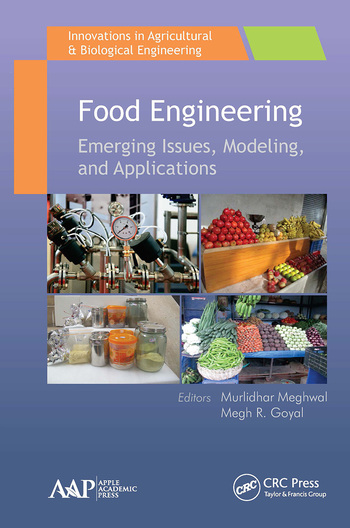Engineering R&D: Radical issues in irradiation packaging

But food sterilization is best done in-container, and processors have few options when packaging products prior to irradiation. Section 179.45 of the Code of Federal Regulations’ Title 21 only lists 10 approved packaging materials for use during food irradiation, half of which are obsolete. Modern polymers need to be added to the list if the food industry is to utilize irradiation to deliver safer foods to consumers. A team assembled by the
When a substance is exposed to radiation, chemical bonds between atoms are destroyed, creating ions and free radicals. Ions and free-radicals are inherently unstable, and health authorities want assurances that they won’t decompose the polymer and create toxic substances.
Sadler and a team of up to five scientists spent a year devising testing protocols to validate that any toxins created fall below the 0.5 parts per billion dietary threshold to be considered safe. Then, in July, the team submitted a notification for ethylene vinyl alcohol (EVOH) film. Unfortunately, an FDA panel raised objections, delaying approval of EVOH and several other polymers.
Despite the setback, Sadler expects several polymers to become available for use in radiation treatment in the near future. He recently took time from the flurry of regulatory filings to discuss the research and its ramifications for the industry.
FE: When did this project commence?
Sadler: The Irradiation Task Force was founded in April 1998 to seek revisions in 21-CFR-179.45 to allow a number of polymers used in contemporary meat packaging for use in X-ray, e-beam and gamma irradiation. These polymers include EVOH; nylon 6I6T; nylon 6,6; nylon 6,66; ionomers; and anhydride grafted polyethylene. This has been the longest running single project I’ve ever been involved in. In conjunction with irradiation work, we are building a database of migration data in packaging polymers. We hope to use the data we’ve generated to build an empirical model for diffusion behavior to support claims of limited migration from the polymer into the food.
The idea was to present worst-case migration results on the types and amounts of radiolytic products produced during radiation treatment to an FDA review board. During radiation, there is a very brief amount of time for ion chemistry to occur. As it turns out, most radiolytic compounds are also produced by thermal decomposition and treatment with light.
If you take a long polymer chain and expose it to radiation, a number of things can happen, depending on how it is irradiated. The radiolytic byproducts can cross-link with other polymers, or chain cleavage can occur. In the case of EVOH, only one in five chains is altered by irradiation, so radiolytic events are rare. The concern from a regulatory perspective is that, with random chemistry taking place, are we creating some pernicious compound during irradiation? We set out to generate analytical data on this question.
FE: What was the testing process?
Sadler: Un-irradiated film was exposed to 3 kilograys (kGy) and 10 kGy of radiation to determine the relationship between radiation dose and the concentration and character of radiolytic compounds. Our tack was somewhat novel, grinding the material and putting it into sealed tubes for irradiation. It was then heated very quickly to affect gas-chromatography separation so that we could map contaminant migration due to radiation and quantify it. If you have diffusion values for compounds within the polymer, you can extrapolate the migration levels and mathematically model quantities of polymer radiolytic compounds actually appearing in the food.
The process was unusual, since we were dealing with substances from 20 to 500 molecular weight. Understanding the response factors for various functional families of compounds was critical in accomplishing this work.
Once we quantified the level of migration that occurs, we could make arguments about the limits of diffusion. For example, traces of cyanide are created from one polymer. Are they of toxicological importance? Certainly not, and that is reflected in the data.
Sadler: That is the highest exposure allowed by the World Health Organization. For food, usually no more than 3 kGy is used, so those test results were overlaid with the lab results at 10 kGy. As it turns out, 10 kGy doesn’t necessarily have the most destabilizing effect on these polymers. It is sometimes the case that 3 kGy treatment produces more of a radiolytic compound than 10 kGy.
FE: Antioxidants trap free radicals and stabilize them. Wouldn’t their presence in a laminate or coextruded film structure resolve the free-radical issue?
Sadler: In fact, antioxidants are part of the structure of polyolefins, so they take the free-radical bullet when those films are exposed to radiation. In our original discussions with the FDA, an agreement was struck where polymers with a worst-case additive package could be tested for radiolytic damage. If the worst-case formulation passed, then any combination of additives at levels below worst-case could be used without additional FDA review. The FDA has rethought this position. From a regulatory submissions standpoint, the agency’s Oct. 23 reassessment to disallow worst-case submissions has not helped at all.
FE: That must have been a frustrating development.
Sadler: It has caused us a setback. Now we have to determine if the data we’ve already submitted can still be applied, or do we have to do a least-case analysis of the various additives? If we have to do additional testing, we’ll do it.
FE: Polyethylene terephthalate (PET) film was approved for use with irradiation in 1964. Given PET’s widespread use in rigid packaging, why isn’t it a popular choice for irradiation?
Sadler: PET only has fair to middling characteristics as a barrier to oxygen and moisture. By itself, PET usually is not adequate. You would need 12 mils of material to provide an adequate gas barrier, but film may only be 1 mil thick. Also, PET film is not heat sealable, so another compound has to be introduced to close the package.
FE: Why have you made approval of EVOH a priority?
Sadler: In many ways, EVOH is a no-brainer polymer because of its excellent oxygen-barrier properties and because it is so widely used in food packaging. Unfortunately, the methodology used in our tests breaks some new ground and results in probability curves and charts that the FDA’s lead toxicologist had not dealt with before, so that has resulted in some delays.
When we resubmit the EVOH petition, we’ll address the concerns raised by FDA in the fall. If the results laid out in the petition are acceptable, premarket approval could be granted within 120 days.
FE: With more packaging options available, will food processors make greater use of irradiation?
Sadler: Public perceptions are certainly subject to change. If you go back to the period before World War II, you find a much different perception. I came across a picture of a grocer posed next to a sign reading, “92 sets of triplets grow strong on irradiated milk.” Of course, after the effects of the bombing of
Looking for a reprint of this article?
From high-res PDFs to custom plaques, order your copy today!







